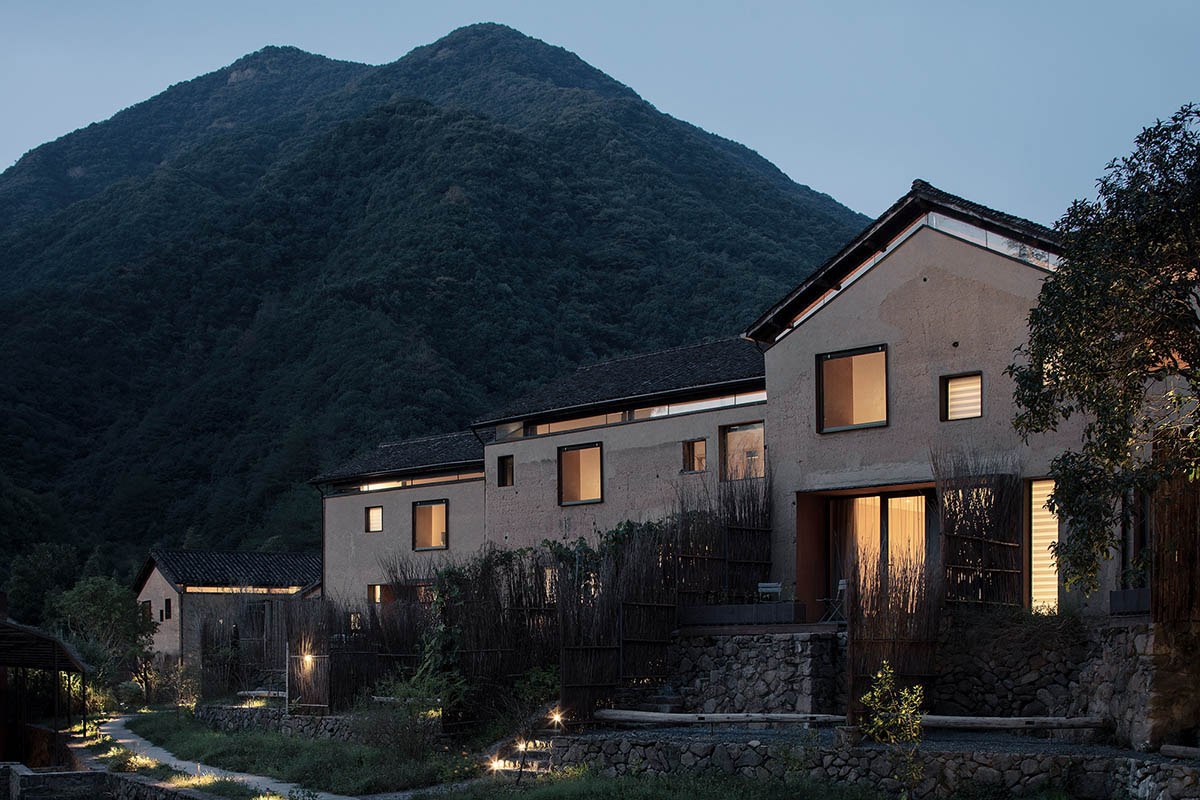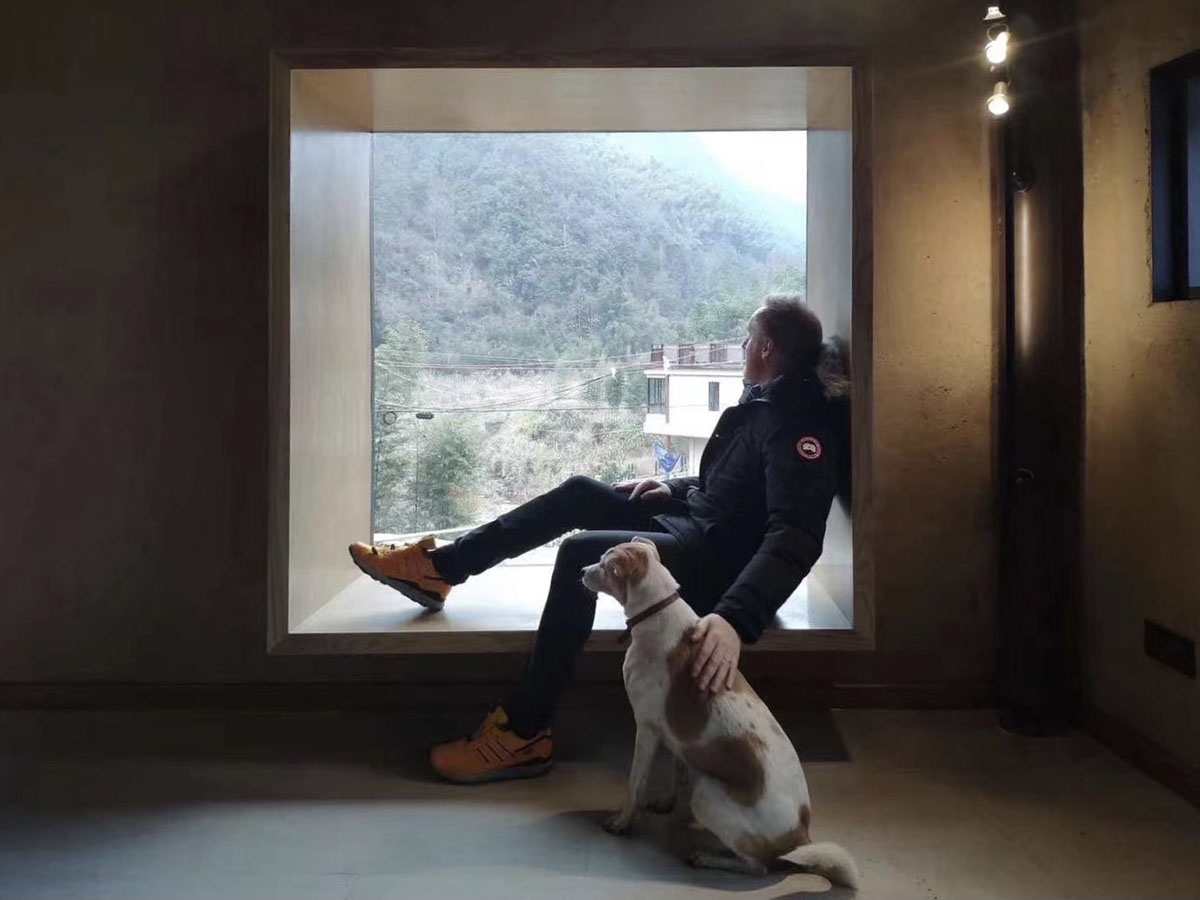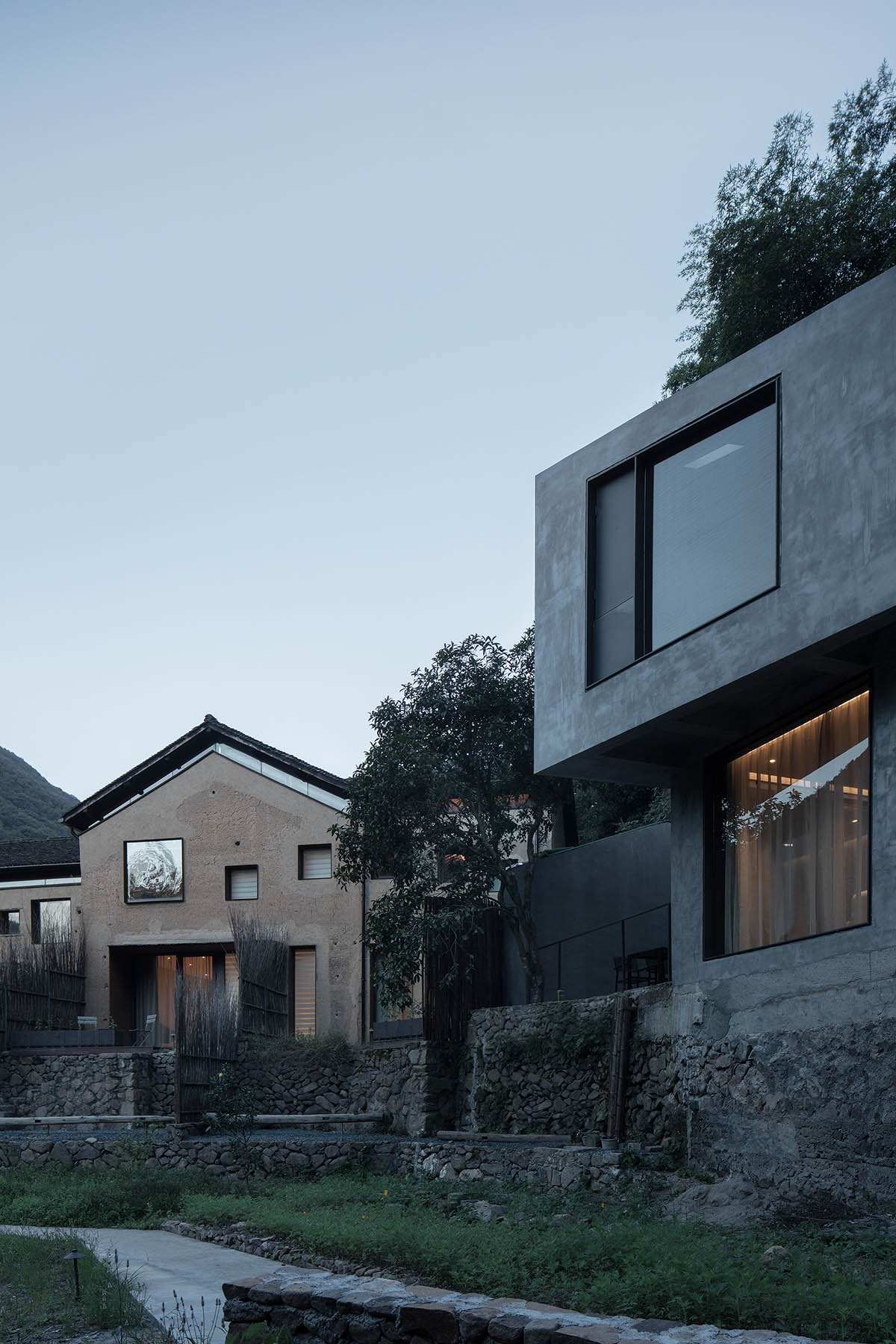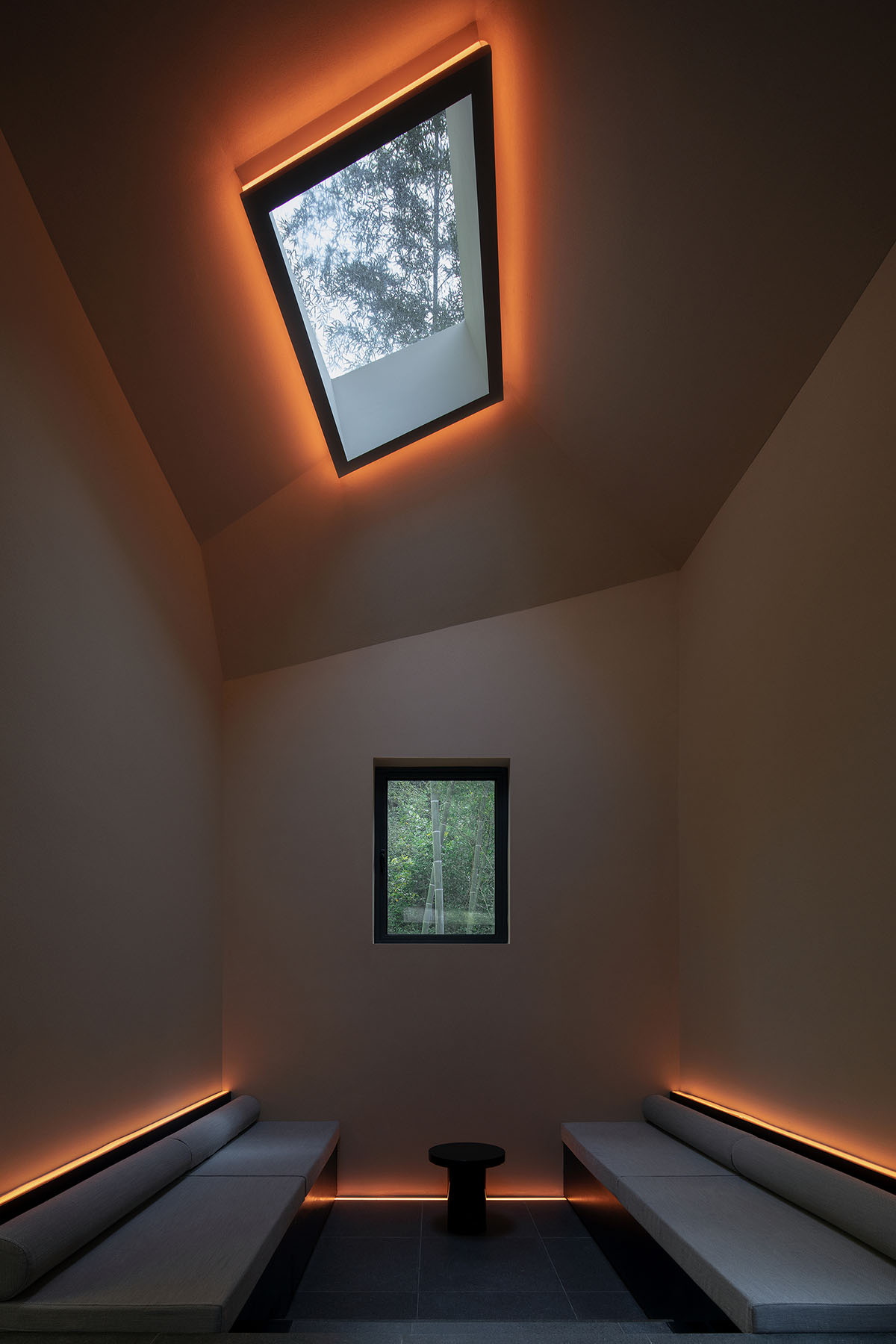Submitted by WA Contents
MDO converts existing village houses into a boutique hotel inspired by traditional lantern culture
China Architecture News - Jan 17, 2022 - 15:56 3043 views

Shanghai-based architecture and interior design studio More Design Office (MDO) has converted six existing village houses into a boutique hotel in Qinglongwu, an ancient village in Tonglu, Hangzhou, China.
Named Flowing Cloud Township Villa, the 1,300-square-metre project was completed as part of the Fangyukongxiangsu Cultural and Creative Complex. As the studio explained, in the future, various cultural activities will be held here all year round.
The studio is inspired by the traditional lantern culture of the village and wanted to create a retreat outside the city, so that people can feel the history and material culture of Qinglongwu, and immerse themselves in the connection with nature.
MDO was commissioned to transform the old six village houses into guest houses in 2017. MDO explained the project with its own words below.

Image © Zhi Xia
Time and patina
When the studio first visited the site the team was interested in the existing buildings and their relationship with the landscape. The buildings are all sited in a valley very close to each other linked by a small cobbled street. Each building looks out onto bamboo forest which envelopes the village.
The buildings have this great sense of ageing, the old walls and windows tell the stories of the past through the marks and imperfections on their surfaces.

Image © Zhi Xia
The existing building had a traditional timber. The architects wanted to see if it was possible to keep it and adapt it. However on closer inspection they realized the existing structure and roof were too weak and damaged to be retained.
The existing windows were very small which created a dark and gloomy internal environment with no real visual connection to the beautiful bamboo forest.

Image © Zhi Xia
Sensitive adaption
The goal of the project was to modernise the existing buildings with a sensitive approach and improve the relationship with the landscape. Where possible the existing walls, windows and doors are all retained and repaired by local craftsmen. To fix the roof a new steel structure was built inside the existing walls, and the roof structure and finish was done using traditional techniques and materials.
New elements are added to the interior as objects placed independently from the existing walls, allowing guests to clearly read the relationship between the old and the new.

Image © Zhi Xia
The design team added underfloor heating and modern bathrooms to make the space feel very comfortable, but the other functions were kept quite simple to be less of a distraction. So the guests can avoid TV or other digital distractions and focus on real interaction with the nature or their friends and family.
Social connection is at the heart of the project. The design creates moments for people to come together to enjoy each other's time. Whether it be an external space for group BBQ, or living area for families to chat, or more private quiet spaces for people to have some time for self reflection, in each environment the design focuses on the connection between the landscape and existing buildings.

Image © Zhi Xia
Sunlight
"Away from the hustle and bustle of the city, we hope that our guests can experience the changing rhythm of the four seasons," said MDO.
"To improve the internal daylight we introduced new windows which followed the random timber window of the old building. These new additions were finished in a thin metal frame, distinguishing them from the existing."

Image © Zhi Xia
The placement of these new windows was very important, as the studio wanted to frame the landscape from certain positions inside, for example the view from the bed, or the view from the sofa, or the glimpse of the valley from the shower, the landscape is treated almost like a painting.
The new roof was lifted off the existing walls to create a more generous ceiling height. The team created a clerestory window on all sides of the buildings. Diffused light softly penetrates into the depths of the space, and guests can see the bamboo forest from any angle in the roof, providing a constant connection to the landscape.

Image © Zhi Xia
Place and environment
Since there are two building structures that cannot be repaired, MDO sees the new building as an opportunity to establish a dialogue with the countryside and nature.
The location of the two new buildings is the closest to the mountain route, carrying the recreational functions such as reception and bar. The architectural form is regarded as the rock exposed from the hillside by the baptism of water and wind. The surface is rough concrete, which contrasts sharply with the traditional rammed earth of other village buildings.

Image © Zhi Xia
Here, MDO recommend facing materials that can be integrated with nature, bearing the influence of rain, sunlight and snow, and adding natural patina to the facade. This means that within a few years, the exterior wall will become a part of nature, blurring the boundary between architecture and nature.
The creation of the framed window scenery makes the bamboo forest an indispensable part of the interior. During the day, the passing of daylight is reflected on the wall as the shadow changes. When night falls, guests can watch the twinkling starry sky through the windows, enriching the memories of travelling here.

Image © Zhi Xia
"The moon is hazy and the lights are noisy, and the stars are shining in the Lanxuan."
The traditional lantern culture has been transformed into the inspiration and starting point of the lighting design. We regard the new building as a beacon that guides travelers. No matter what direction people approach it from, it welcomes people to enter it.
The changing light colors suggest the change of space function, and it is also a direct indication of the dynamics that are taking place in the space and the atmosphere of the space.

Image © Xun Zheng
According to the studio, "the architecture and space of Flowing Cloud Township Villa are technical products of local crafts and culture."
"The vast China has diverse culture, landscapes and people, so there will never be a solution that can be applied to all environments," the team added.
They added that "as designers, in the future, we will devote ourselves to studying and understanding the nuances and creating a unique design for each place."

Image © Xun Zheng

Image © Zhao A

Image © Xun Zheng

Image © Andy He

Image © MDO

Image © Xun Zheng

Image © Zhi Xia

Image © Zhi Xia

Image © Zhi Xia

Image © Zhi Xia

Image © Zhi Xia

Image © Zhi Xia

Image © Zhi Xia

Image © Zhi Xia

Image © Zhi Xia

Image © Zhi Xia

Image © Zhi Xia

Image © Xun Zheng

Sketch © Justin Bridgland

Plan © MDO
Project facts
Project name: Flowing Cloud Township Villa
Architects: More Design Office
GFA: 1300 Square Meters
Category: Village Renovation
Address: Qinglongwu, Xiekengkou, Luci Village, Fuchunjiang Town, Tonglu County, Hangzhou
Design Content: Interior Design, Planning Design, Soft Concept
Design Director: Justin Bridgland, Jaycee Chui
Design Team: Da Gao, Szuniang Tseng, Carlo Alberto Follo, Yabin Yao, Kelsey Alexander, Yanping Tang, Shengnan Xia, Haiyan Peng, Zhiyuan Wang, Jiacheng Que, Di Chang
Completion Time: 2017-2021
Photography © Zhi Xia, Xun Zheng, Zhao A, Andy He
Top image © Zhi Xia
All drawings © MDO
> via More Design Office
